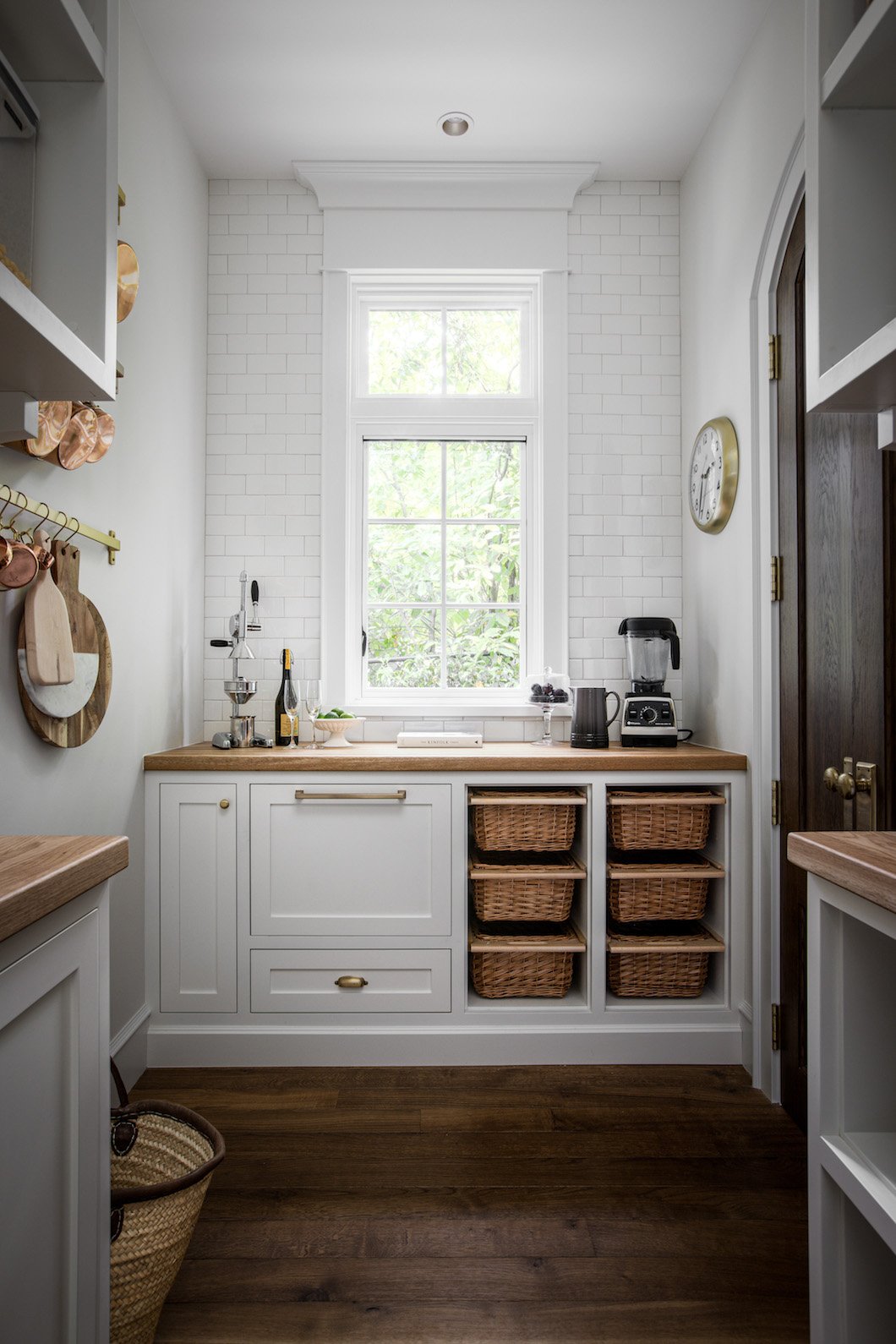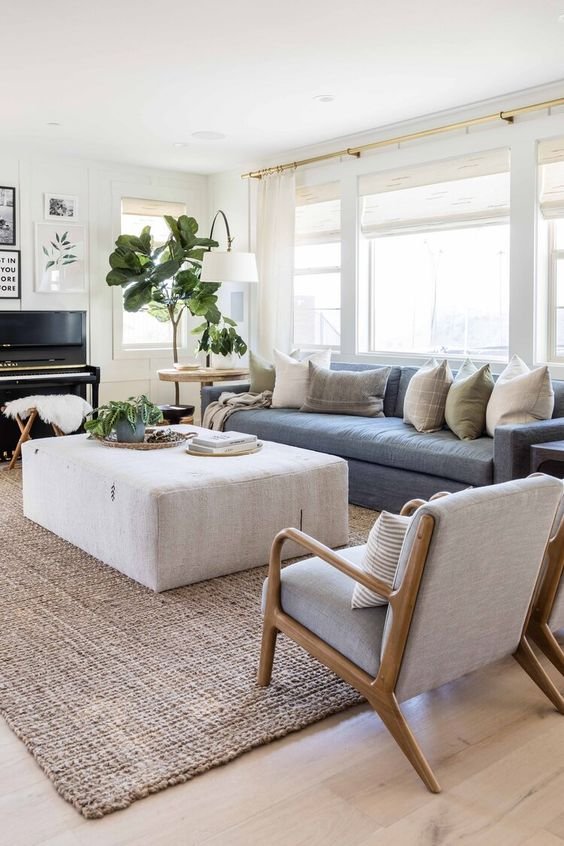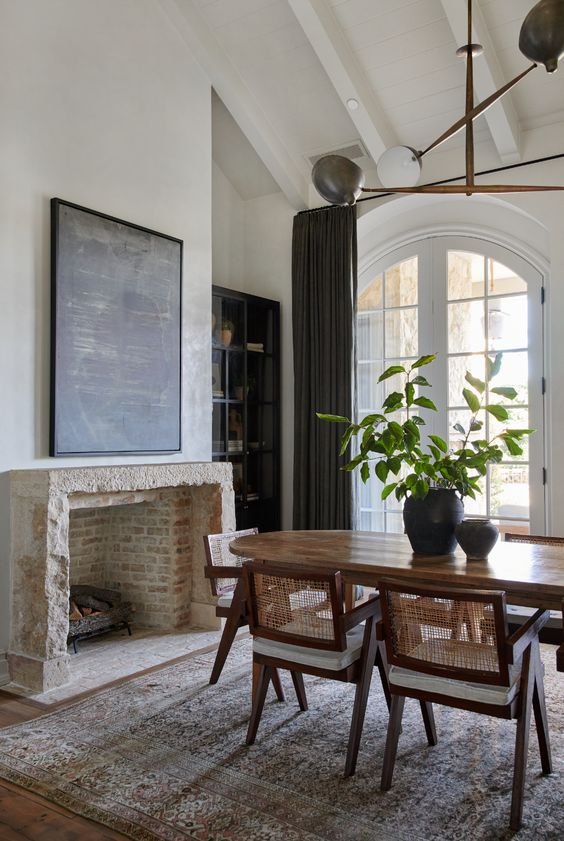How to mix wood tones with confidence.
While people are getting more and more adventurous with mixing periods and styles in their homes, one of the puzzling questions that was asked inside our Facebook group is how to mix wood tones in a room. Whether it's matching a dining table to an existing hardwood floor or trying to mix various wood furniture pieces together, many people are hesitant to combine different woods in a space. But let me tell you here first, the era of matchy-matchy furniture is over. Say goodbye to the furniture sets of yore, because mixing wood tones can be just as beautiful as mixing metals in a room.
Repeat after me: “You CAN and SHOULD mix wood tones in a space.” Actually having all wood tones match will make everything look flat. As you decorate your home over time, you will pick up pieces along the way that don’t match. That’s how you create a cozy, collected home that is timeless.
The only trick is to follow a few foolproof wood tone rules.
Find your dominant wood tone
It always helps to pick a dominant wood tone as a starting point to help you choose other pieces to bring in the room. If you have wood floors, your work here is done — those are your dominant wood tone. Otherwise, pick the largest furniture piece in the room like a desk, dresser, or dining table. When choosing your other wood tones to add to the space, always consult your dominant shade first.
Match the undertones
Pay attention to whether your dominant wood tone is warm, cool, or neutral, and stay in the same family to create a coherent thread. Most wood is warm. But take note at the chart below! Walnut is versatile because it’s so neutral, in which case the undertone could swing either way depending on the stain and the woods you pair it with. If your dominate wood tone is warm, stick with warm woods. If your big piece is cool in tone — embrace it, and look for other pieces that are cool.
If you're feeling more daring, contrast is your friend. It may seem counterintuitive, but going for high-contrast shades can actually work seamlessly. In this living room, for instance, the light warm wood floors are complemented with the dark piano and walnut toned side table.
3. Create Continuity with Finish
If your wood tones are all over the place, it can be helpful to create continuity with similar wood grains or finishes. For example, if most of the finishes in your room are matte or eggshell with a rustic grain finish, the room will look cohesive. If your wood floor or table is glossy, follow suit and choose side tables or chairs in a glossier finish.
Break it up with a rug
Breaking up your wood elements with a rug can make a huge difference, especially if your furniture and wood floors have a similar wood tone. In this dining room, the legs of the dining chairs may have blended too much if placed directly on the wood floors, but with a patterned rug in between, they fit in and don't look out of place.
Quick Tip
If your furniture and wood floors are drastically different in color, a patterned statement-making rug can also help minimize the contrast between the two.
4. Keep it on repeat
Once you find the shades that work, just rinse and repeat. Part of what makes a room feel cohesive is repetition. Repeating each wood tone a minimum of two times is a foolproof way to nail this look.
When pairing wood tones, you could choose a piece as small as a bowl or a frame. Balance the wood tones around the room. Just like you would in a gallery wall, avoid “clustering” all of the wood tones in one area. And speaking of gallery walls, this is a great place to tie in a wood tone that needs duplication. If a chair or an end table is the only piece in its tone, look for a frame in the same tone. Having recurring wood tones in your room provides continuity and structure to your space, so it looks put-together without trying too hard.
In the photo above, the caning in the dining chairs repeats the wood tone in the table. The black frames of the chairs complements the darker wood floors. The rug allows the chairs to not blend in too much with the floors while adding contrast to the space.
The warmth of wood is making a big comeback. So, there are more wood tones, cabinets, and accessories to choose from now than ever before.
If you ever feel like things have gotten “out of hand” — too many wood tones, too many finishes — pull back. Swap out a piece or two. Try sanding a few different wood pieces down and applying the same stain. Introduce some contrast (I love pairing black –even stained black!). Look to that dominant wood tone, and start over if you have to.







